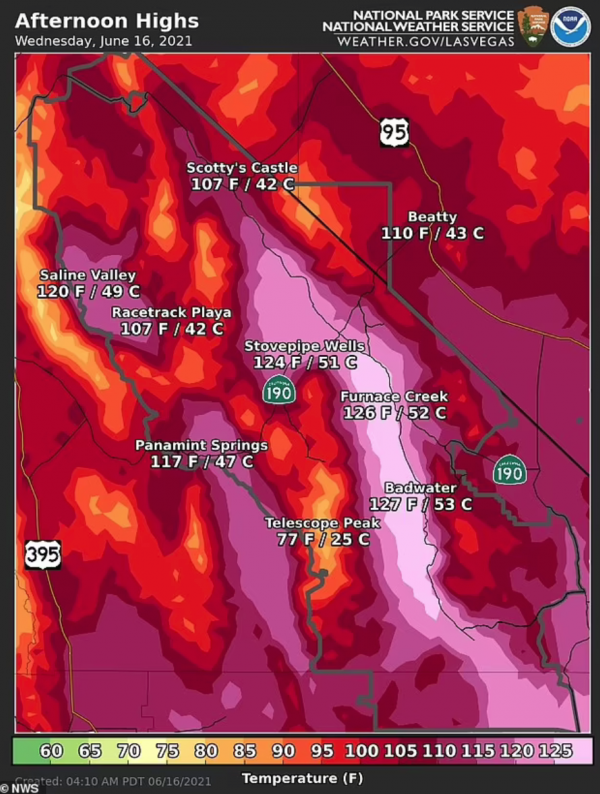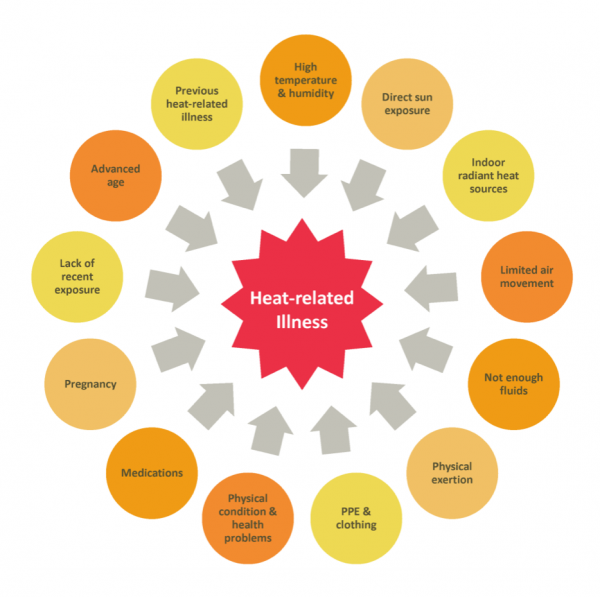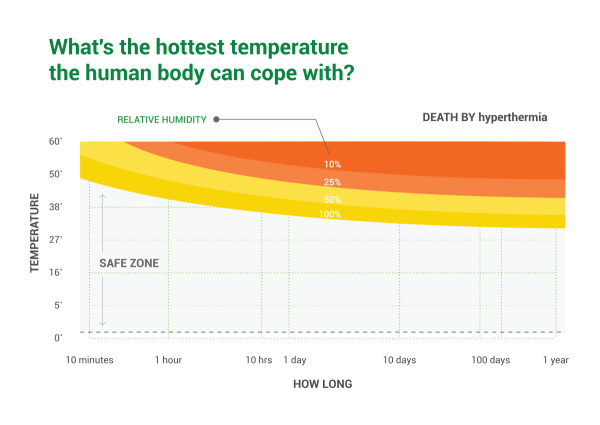Last Updated on
California’s Death Valley Extreme Summer Heat Could Break Its 1913 Record as The Hottest Place on Earth
Death Valley is one of the hottest places on Earth. Temperatures began to rise the past weekend and reached 129 °F (54°C) on June 16, 2021. The triple-digit temperature could break its own all-time high record of 134 °F on July 1913 as the hottest temperature ever in the world.The heat is surrounded by steep mountains that traps the heat at the depth of the valley, making it a very hot area.
Source: National Weather Service USA
The Heatwave
The extreme temperature has resulted in sizzling heatwave across southwest region for three days. The heatwave furthers spread to northeastward to Utah, Iowa and Missouri, and all the way north to the Canadian border making it a regional heatwave.
According to AccuWeather, this current heat wave is remembered not only for its intensity, but also for its duration.
Because of the searing heat and high humidity, rising electricity demand for air conditioning can strain the power grid and is at risk of power outages. The state’s power grid, urged the public to conserve energy during peak times to prevent a total blackouts.
This heatwave is likely to dry water supplies and soils, expanding the area of extreme to exceptional drought, produces large wildfires, and affects 40 to 50 million people in the region.
The Effects of Extreme Heat to Human Body
The immediate effects of heatwaves on the human body are heat exhaustion, heat cramps, heat rashes, dehydration, even potentially lead to heat strokes or even with death. According to the the World Health Organization (WHO), extreme heat can also worsen pre-existing health conditions, including respiratory diseases, heart conditions and kidney disorders.
The Hottest a Human Body can Sustain
The normal human body temperature is typically range from 36.5 to 37 °C (97.7–98.6 °F). Anything hotter than that puts extra heat pressure towards the body. When temperature increases, the body reacts by increasing blood flow to the skin’s surface, taking the heat from within the body to the surface, producing sweat.As the sweat evaporates, the body cools down.
There is a correlation between humidity (the amount of moisture in the air) and our body’s ability to cool itself. The higher the humidity, the hotter it feels as it makes our body harder to sweat and keep ourselves cool, hence this makes us feel awful. In contrast, if humidity is low, this means like in a hot dry weather, we can slightly withstand hotter temperatures and dependent on sweat to cool our body down.
Source: Information Source: NASA | Live Science
Keeping body cool
When exposed to extreme heat or hot environments, we may be at risk for heat stress and can become ill from the heat our body can not properly cool off.
Heat stress is considered to be the heat generated in the body (metabolic heat), plus the heat gained from the environment (environmental heat), minus the heat lost from the body to the environment.When it reached to a level of heat stress where one’s body are no longer capable of maintaining body temperature required for normal body functions, the risk of heat-related illness increases.
Here are some protective actions to keep our body cool and prevent from heat-related illness:
- Drink more water and don’t wait until feeling thirsty to drink.
- Stay in air-conditioned places as much as possible.
- Limit outdoors activity especially when it is the hottest time of the day.
- Avoid strenuous physical activities during hot weather.
- Wear loose, lightweight, light-colored clothing.
- Do not rely on a fan as the main cooling device during an extreme heat event.
If you are looking for reliable and cost-effective heat stress monitoring, feel free to check TWL-1S Heat Stress Monitor.








